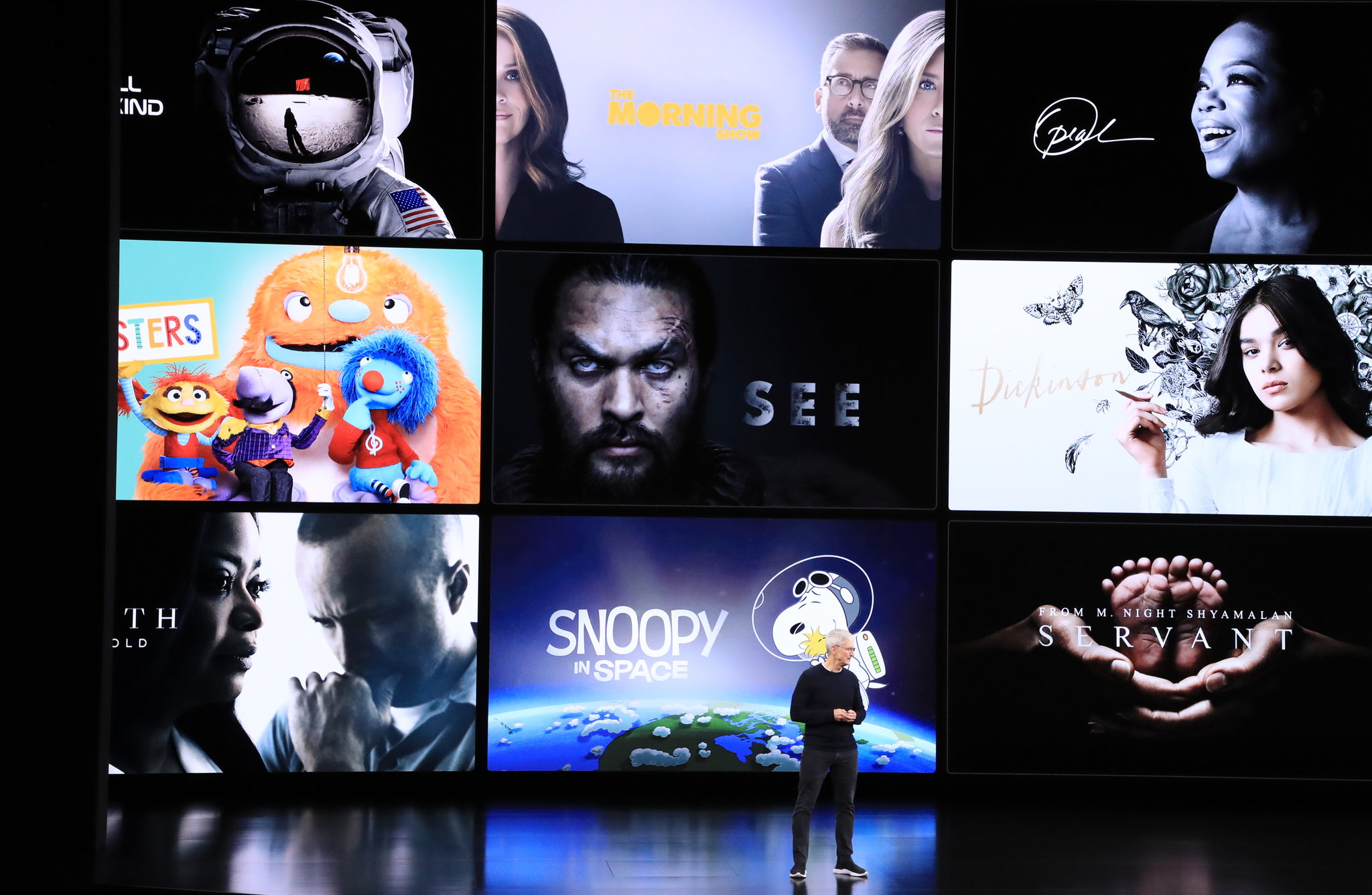Apple TV Plus Should ‘Reconsider’ its Options: MoffettNathanson
Computer giant loses penetration ground in quarterly streaming survey; Netflix, Amazon show gains

A rough showing in MoffettNathanson’s quarterly SVOD survey should force Apple TV Plus to “reconsider” its options, according to media analyst Michael Nathanson.
Nathanson, a principal in the influential analyst firm, releases a quarterly snapshot of SVOD performance based on an online survey of about 8,500 homes by researcher Harris X. The survey tracks several data points, including service penetration and engagement. For the past several quarters Netflix has dominated the survey metrics, and this most recent period was no different. But while the competition has managed to continue to gain ground, especially during the COVID-19 pandemic that has left many Americans housebound for months, Apple TV Plus has slipped.
Also read: Is It Already Too Late for Apple TV Plus?
Netflix led the group in penetration, with 73% of respondents saying they used the service to stream content (up from 72% in May), while penetration for Amazon Prime Video placed second with 52% (up from 51%). Rounding out the list were Hulu, flat at 36% and Disney Plus, at 28% (up from 27%). Only Apple TV Plus showed a decline, to 7% from 8% in May.
“The Apple TV Plus data points should force Apple to reconsider their strategies and options at this point,” Nathanson wrote.
Adding to the analyst’s concern is the rise in the number of subscribers that are receiving the Apple TV Plus service for free. At its Nov. 1 launch, Apple began a promotion where all new buyers of an iPhone, iPad, iPod Touch or Mac computers receive a free year of the Apple TV Plus service. While that could help put the service in front of more eyeballs, Nathanson was a bit nervous about the increase in non-paying subscribers -- to 57% of total users from 50% previously.
“We remain concerned about future subscriber churn given the mix of a large number of promotional customers to one-year plans and a lack of original content,” Nathanson wrote.
The smarter way to stay on top of the streaming and OTT industry. Sign up below.
He noted that Disney Plus also had offered a free year of service to Verizon wireless customers at its launch in November -- the number of total customers on that promotion declined slightly in the quarter to 18%. But he was curious as to whether promotions around the release of the movie version of Broadway hit Hamilton on July 3 would skew those results.
“In short, both services are in danger of losing momentum during the current production shutdown,” Nathanson wrote.
While some studios are beginning to return to producing some shows outside of the U.S., Nathanson noted that Netflix may be in the best position, given its global subscriber dominance and deep pockets.
"As production opens up outside of the U.S., only entities with a significant global presence like Netflix will be able to add original titles," Nathanson wrote. Netflix has about 120 million international paid subscribers.
Netflix too could benefit from recent price increases by virtual MVPDs. Earlier this month, YouTube TV raised its price by 30% ($15 per month) to $65 monthly to help cover the rising cost of programming.
In the report, Nathanson noted that when asked why they subscribe to the service, 57% of Netflix, 59% of Prime Video, 56% of Hulu and 49% of Disney Plus customers said it was because of the high cost of subscription TV. The responses were an increase of just 100 basis points for Prime Video and Disney, but 400 basis points for Netflix and Hulu. As more vMVPD services raise prices, Nathanson said it could “push even more people toward OTT offerings.”
That kind of optimism helped steer the analyst toward raising his subscriber metrics for Netflix, which is scheduled to report its Q2 results on July 16. Nathanson now believes Netflix will add 1.75 million domestic subscribers in the period (even with Q1 and up from his previous estimate of 1 million additions). In Europe, the Middle East and Africa, Nathanson now believes Netflix will add 7.9 million customers in the period, instead of the 7.2 million he previously estimated. For the full year, he expects the SVOD pioneer to add about 30 million customers globally.
